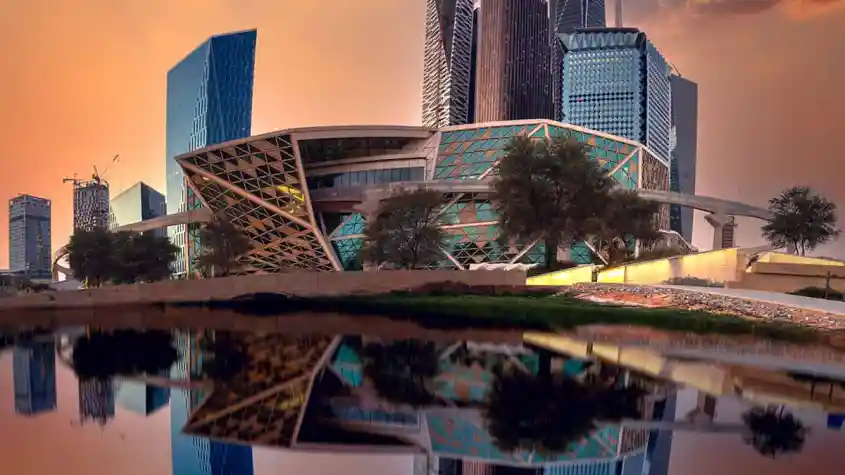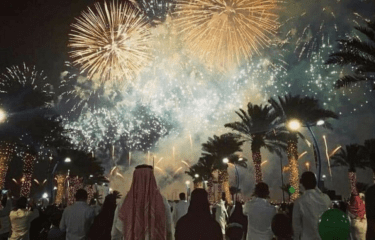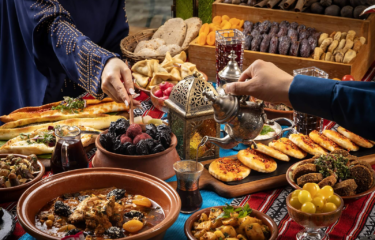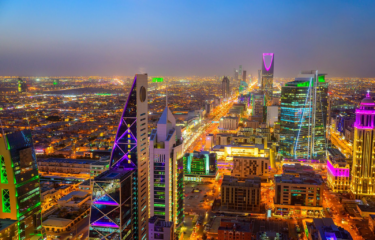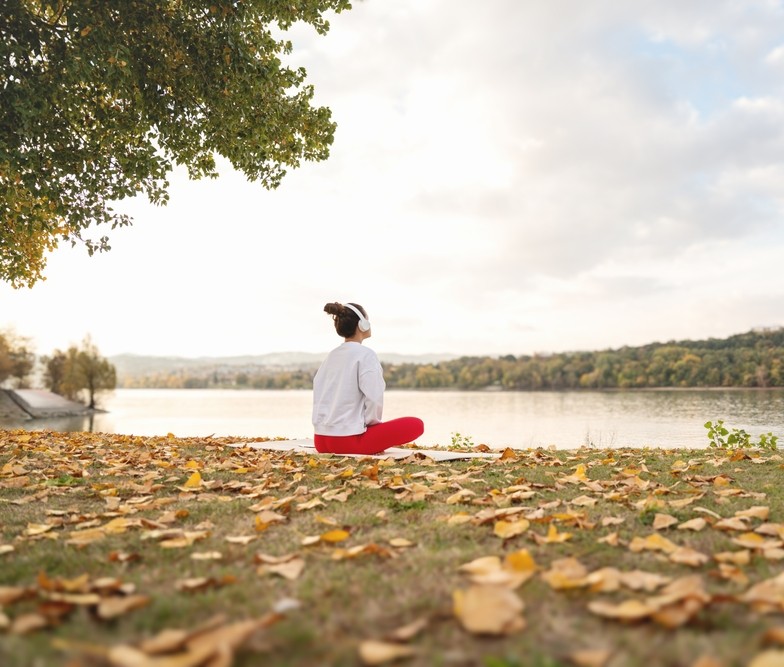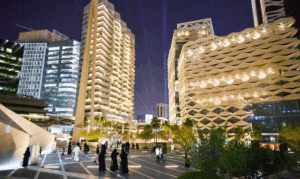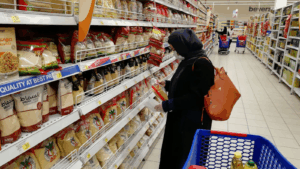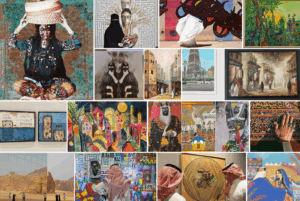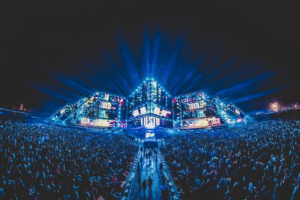The skies and the rich, golden soil of Saudi Arabia hold an undeniable charm, a timeless allure that reflects why Allah Subhanahu WaTa’ala chose this sacred land as the cradle for delivering the ultimate truth to humanity. For centuries, Saudi Arabia has been a focal point of global fascination—first as a vital hub for ancient trade routes, later as a powerhouse in the oil and gas industry, and now as a nation boldly reimagining its future. With its iconic landmarks, rich traditions, and innovative spirit, there are so many interesting facts about Saudi Arabia that continue to captivate the world.
From its monumental shift away from dependence on oil to its rise as a leader in advanced industries and bold infrastructure, Saudi Arabia’s transformation is nothing short of extraordinary. This dynamic evolution beautifully intertwines with the historical tapestry of the land, revealing interesting facts about Saudi Arabia at every turn. The stories etched into its past resonate today, not just in its culture, but also in its thriving tourism sector and vibrant modern society.
Imagine a place where history whispers from ancient ruins, where the warmth of its people reflects the purity of their hearts, and where a flourishing economy promises a brighter future. Saudi Arabia is all of this and more. Let’s uncover interesting facts about Saudi Arabia—from its breathtaking landscapes to its profound cultural heritage—and explore the remarkable journey of this land destined for greatness.
Interesting Facts About Saudi Arabia – Historical Facts
Saudi Arabia’s history is a mosaic of remarkable events and ancient civilizations that shaped the Arabian Peninsula. This land, where Saudis were writing their history with the golden pen, has been the cradle of human civilization for thousands of years.
Birthplace of Faith – Where Journey of Islam Began
Saudi Arabia holds the unique distinction of being the birthplace of Islam. The cities of Mecca and Medina, central to Islamic history, witnessed pivotal moments that changed the course of global history forever.
Ancient Civilizations – Lands Tell Stories
The Arabian Peninsula was home to thriving civilizations like the Dilmun and Thamud, whose legacies are preserved in stunning archaeological sites. These ancient societies left inscriptions, tombs, and artefacts that tell the story of their rich culture.
Golden Age of Trade – The Queen of Ancient Trade
In ancient times, Saudi Arabia was a key player in global trade, particularly through the Incense Route. This network connected the peninsula to civilizations in Africa, Asia, and Europe, with Arabian merchants writing history with their golden contributions to commerce and culture.
Interesting Facts About Saudi Arabia – Cultural Facts
National Dress – Timeless Elegance
The national dress of Saudi Arabia reflects a perfect blend of tradition and identity. Men wear the elegant thawb, a long white robe that exudes simplicity and pride. Women adorn the graceful abaya, often complemented by intricate designs. Visitors may notice that wearing these traditional garments is especially encouraged when visiting government offices, symbolizing respect and cultural unity.
Storytelling and Poetry – Forever Kept Arab Tradition
Picture a gathering under the starlit desert sky, with stories, poems and folk music flowing like a gentle breeze. Storytelling and poetry are the heartbeats of Saudi culture, weaving history, wisdom, and emotion into words. Whether it’s an epic tale from the past or stanza capturing the beauty of life, these traditions unite people in shared experiences and cherished memories.
Falconry – Soaring Through an Ancient Saudi Tradition
In the vast deserts of Saudi Arabia, falconry began as a necessity for survival, helping Bedouins hunt in the harsh terrain. Over time, it evolved into a revered tradition, symbolizing courage, skill, and a deep bond with nature. Today, falconry is celebrated as both an art and a sport, connecting the Kingdom’s past to its present.
Arabic Calligraphy – UNESCO’s-Declared Cultural Heritage
Arabic calligraphy in Saudi Arabia is not just writing—it’s an art form that dances across paper, expressing beauty and meaning. Declared a UNESCO Intangible Cultural Heritage of Humanity, it celebrates the Arabic language through artistic strokes. From ancient manuscripts to modern art pieces, calligraphy is a testament to creativity rooted in tradition.
Interesting Facts About Saudi Arabia – Geographical Facts
The Largest Camel Market in the World – Beauty of the Deserts
In the heart of Riyadh lies a bustling hub of tradition and trade—the largest camel market in the world. Spanning an impressive two square miles, this vibrant market sees the daily sale of over one hundred camels. Here, traders and buyers gather, preserving an age-old connection to Saudi Arabia’s Bedouin heritage, where camels symbolize resilience and life in the desert.
Saudi Arabia Has the World’s Largest Airport – Future Takes Flight Here
The King Fahd International Airport in Dammam isn’t just an airport; it’s a marvel of space and infrastructure. Covering an incredible 9,080 acres, it even surpasses the total land area of Bahrain. This sprawling gateway connects Saudi Arabia to the world while standing as a testament to the Kingdom’s vision of progress and grandeur.
Saudi Arabia Buys Sand from Australia Despite The Vast Deserts
Despite being a land of deserts, Saudi Arabia’s vast sands remain unsuitable for construction. Surprisingly, the Kingdom imports sand from Australia, which meets the precise requirements for building materials. This unexpected exchange highlights the unique interplay between Saudi Arabia’s natural environment and modern development.
Saudi Arabia – Home to the World’s 2nd Largest Proven Oil Reserves
With its vast oil reserves, Saudi Arabia holds the title of having the world’s second-largest proven oil reserves. This invaluable resource has powered the Kingdom’s economy for decades, shaping its role as a global energy leader. As the world shifts towards sustainable energy, Saudi Arabia continues to lead with a balance of tradition, innovation, and influence in the global energy market.
The Extinct Arabian Oryx – That Now Thrives
Once declared extinct in the wild in 1972 due to hunting and poaching, the majestic Arabian Oryx has made a remarkable comeback. Thanks to dedicated conservation efforts, they were reintroduced into their natural habitats in the 1980s. By 2011, their status improved to “vulnerable,” with around 1,220 now roaming the wild, including the vast Rubʿ al-Khali desert, a living symbol of resilience and survival.
Saudi Arabia has No River System – A Land Shaped by Deserts
Saudi Arabia is unique among nations—it has no river system. Instead, the Kingdom relies on underground aquifers, wadis (valleys), and modern desalination to meet its water needs. This scarcity has shaped its history and ingenuity, turning a challenge into a story of resilience and adaptation in the desert.
NEOM – World’s Futuristic City
NEOM is Saudi Arabia’s visionary project, designed to be the world’s first fully sustainable and futuristic city. Located on the Red Sea, this innovative metropolis will harness cutting-edge technology, artificial intelligence, and green energy to create a new way of living. NEOM promises to redefine urban life and set the standard for the cities of tomorrow.
Bonus Interesting Facts About Saudi Arabia for Tourists – Making Your Journey Easy and Happier
Al Habala Village – It Can Only Be Reached Via Cable Cars
Hidden in the Asir region, Al Habala Village is a marvel of history and isolation. Established 370 years ago by the Khatani Tribe to escape Ottoman invasions, this cliffside settlement remained inaccessible until the 1990s. Once reachable only by rope ladders, visitors can now experience the journey via cable cars. Tourists can explore the abandoned village, enjoy cultural dances, visit Al Habala Park, and embrace the breathtaking views of this historic refuge.
Harrat Khaybar – A Volcanic Field with Ancient Secrets
Saudi Arabia’s Harrat Khaybar in the Hejaz province, is a volcanic field with a lot of history to it. Famous for the Jabal Qidr scoria cone, a UNESCO Geological Heritage Site as of 2022, this area boasts lava fields and craters that erupted as recently as 600-700 A.D. More intriguingly, archaeologists have unearthed over 400 Stone Gates here, relics from the Neolithic era that hint at ancient human habitation. A trip to Harrat Khaybar is a journey through nature and time.
Shada Mountain – Home to Prehistoric Caves and Untold Secrets
In the Al-Baha region, Shada Mountain rises majestically, its caves whispering stories of the past. These prehistoric shelters, once homes for early inhabitants, are adorned with ancient engravings depicting animals, birds, and other figures. Giant granite rocks perch above the caves, creating unique, natural designs. Many of these caves are being transformed into tourist attractions. This offers visitors a chance to step back into history while surrounded by breathtaking landscapes.
Black Coffee – A Saudi Origin Story
Black coffee has deep roots in Saudi Arabia. Here, it was first brewed centuries ago as part of ancient Bedouin hospitality. Known as qahwa, this strong, aromatic coffee is made with lightly roasted beans and a blend of spices. People often share it among friends and guests as a symbol of warmth and tradition. Today, it’s an integral part of Saudi culture, enjoyed in homes and cafes across the Kingdom.
Snow in the Deserts – A Rare Saudi Wonder
While deserts are known for their scorching heat, Saudi Arabia experiences the rarest of wonders: snow. The Tabuk, Jazan, and Al-Baha deserts have seen snowfalls in recent years, surprising locals and tourists alike. In these regions, snow-capped mountains and frosty landscapes are a breathtaking contrast to the usual golden sands, creating an otherworldly sight in the heart of the desert.
Saudi Faith and its Citizenship
Unlike the UAE, where investments can secure citizenship, Saudi Arabia follows stricter rules. To become a Saudi citizen, one must be a Muslim or embrace Islam. This policy reflects the Kingdom’s deep connection to its religious identity, distinguishing it from other nations in the region.
Saudi Arabia – A Land of Timeless Allure and Bold Transformation
From ancient ruins that whisper tales of the past to a future shaped by innovation, Saudi Arabia stands as a testament to resilience, culture, and ambition. It is a land where the sands tell stories, the people embody warmth and hospitality, and the landscapes range from pristine deserts to majestic mountains. Whether you’re captivated by its history, inspired by its progress, or drawn to its natural wonders, Saudi Arabia offers an unforgettable experience for every traveler.
As the Kingdom continues its remarkable journey, blending its rich heritage with a vision for the future, it invites the world to discover its treasures, embrace its traditions, and witness the brilliance of its transformation. Saudi Arabia isn’t just a destination—it’s an experience that lingers in your heart long after you leave.
FAQs
What is the best time to visit Saudi Arabia?
The ideal time to visit Saudi Arabia is between October and March. The weather is cooler and more suitable for outdoor activities in these months.
Can tourists visit Mecca and Medina?
Non-Muslims can not enter Mecca or the central areas of Medina, as these are sacred holy sites for Muslims. However, tourists of all backgrounds are welcome to explore other regions of Saudi Arabia.

